Preparing your Sailboat for the Hard Stand
Preparing your sailboat for the hard stand (also called dry storage or haul-out) is essential to protecting it during periods of inactivity, maintenance, or winter. The following is a step-by-step guide to help you prepare your boat. But first, what are the benefits of getting your boat off your swing mooring or out of your pen and onto dry land?
Pros of Hauling Out Your Boat for Winter
Hull Protection
- It could prevent ice damage, blistering, and fouling, depending on your location.
- Reduces the risk of corrosion, especially with metal components.
Easier Maintenance
- Access to hull, prop, rudder, and through-hulls makes repairs and inspections easier.
- Allows for sanding, painting (e.g. antifoul), and major refits.
Lower Risk of Damage
- Eliminates dangers from ice expansion, dock collisions, or sinking from snow load or failed bilge pumps.
Extended Lifespan
- Less wear and tear on systems not being used (engine, batteries, pumps).
- Reduces growth on underwater parts, keeping performance high.
Insurance Compliance
Some insurance policies require boats to be hauled during the off-season in certain climates.
Cons of Hauling Out Your Boat for Winter
Cost
- Haul-out, blocking, storage fees, and re-launching can add up.
- Additional costs for winterising and covering.
Inconvenience
- No spontaneous sailing days during unseasonably warm winter days.
- Transporting gear to and from storage can be a hassle.
Storage Risks
- Incorrect blocking or poor covering can lead to hull stress, water intrusion, or UV damage.
- Yard theft or rodent issues if the boat isn’t well secured.
Recommissioning Work
- Spring recommissioning can be time-consuming and occasionally reveal new issues.
Okay, let’s examine some of the steps involved in getting your sailboat on the hardstand.
1. Haul-Out Preparations
- Schedule in advance with the marina or yard. The time you want a haulout is most likely when everyone wants to do the same.
- Check lift points and slings to ensure safe hoisting. This is typically your responsibility, not the crane driver’s. Markings on the hull should indicate where your lifting points are located.
- Secure loose items below deck and topside to prevent shifting during lifting.
- Get your boat hook and fenders ready to go.
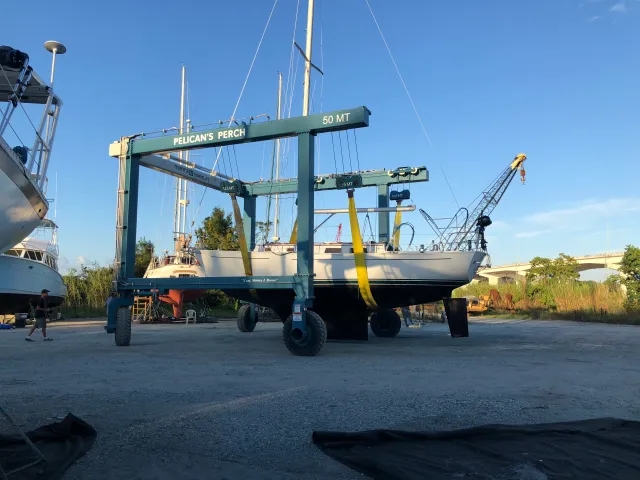
2. Hull & Underwater Gear
- Pressure wash the hull immediately after haul-out to remove growth before it hardens.
- Inspect hull for blisters, cracks, or delamination.
- Remove old antifouling paint (scrape, sand, or soda-blast) if needed. Read more about antifouling.
- Clean and check through-hull fittings and sea cocks.
- Inspect keel, rudder, and propeller for damage or corrosion.
- Grease the prop shaft and folding prop mechanism if applicable.
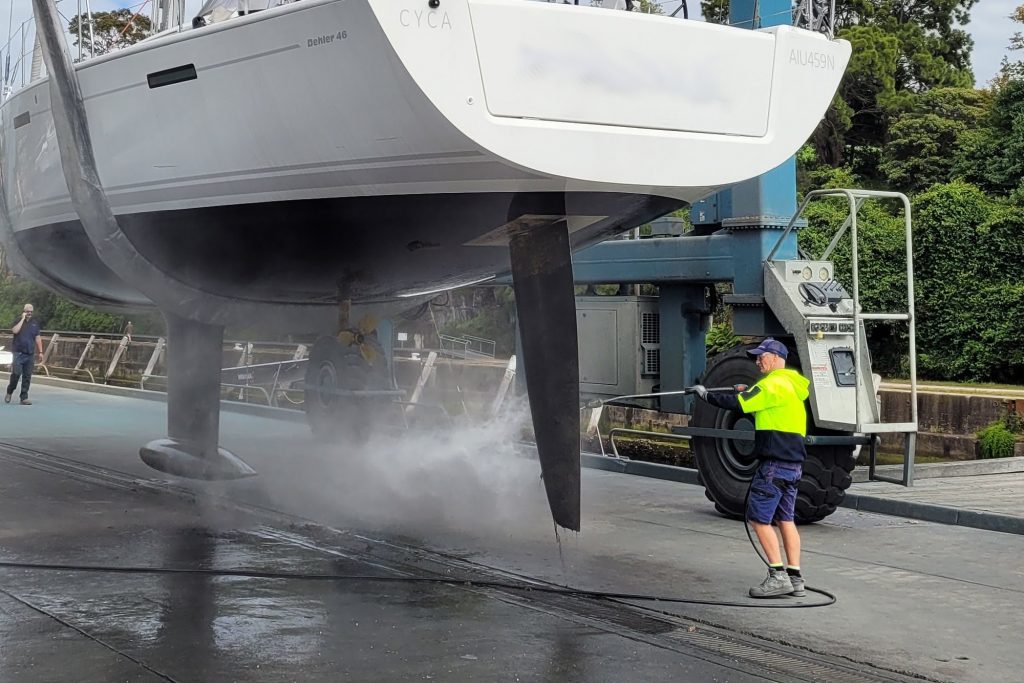
3. Engine & Systems
- Flush the engine with fresh water, especially if in salt water.
- Change the engine oil and filter.
- Drain or replace coolant.
- Fog the engine cylinders (for inboards/outboards).
- Top off the fuel tank and add stabiliser to prevent condensation and degradation.
- Check batteries, charge fully, and disconnect or remove them.
- More about engine maintenance.
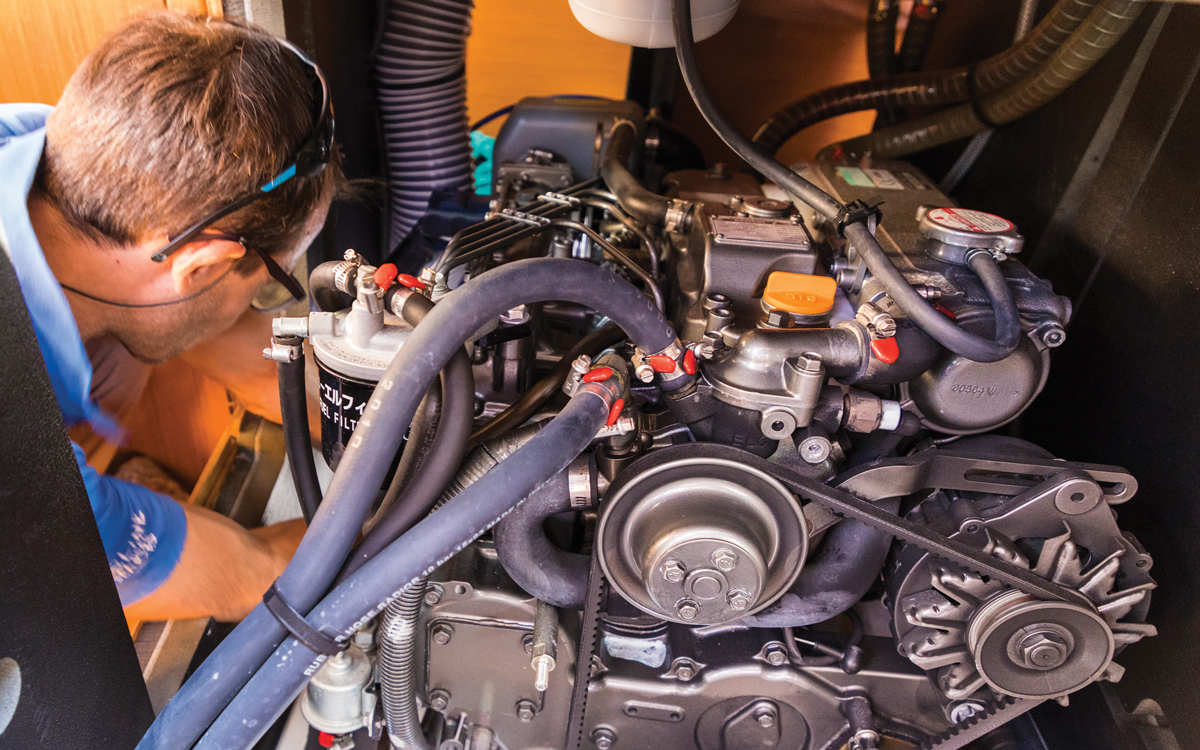
4. Sails, Rigging, and Deck Gear
- Remove all sails, fold them, and store them dry.
- Inspect for wear or UV damage.
- Check standing and running rigging, and replace worn lines.
- Remove halyards or tie them off to avoid chafing and mast slap.
- Clean and lubricate winches, blocks, and furlers.
- Check the mast and spreaders if unstepping is part of your plan.
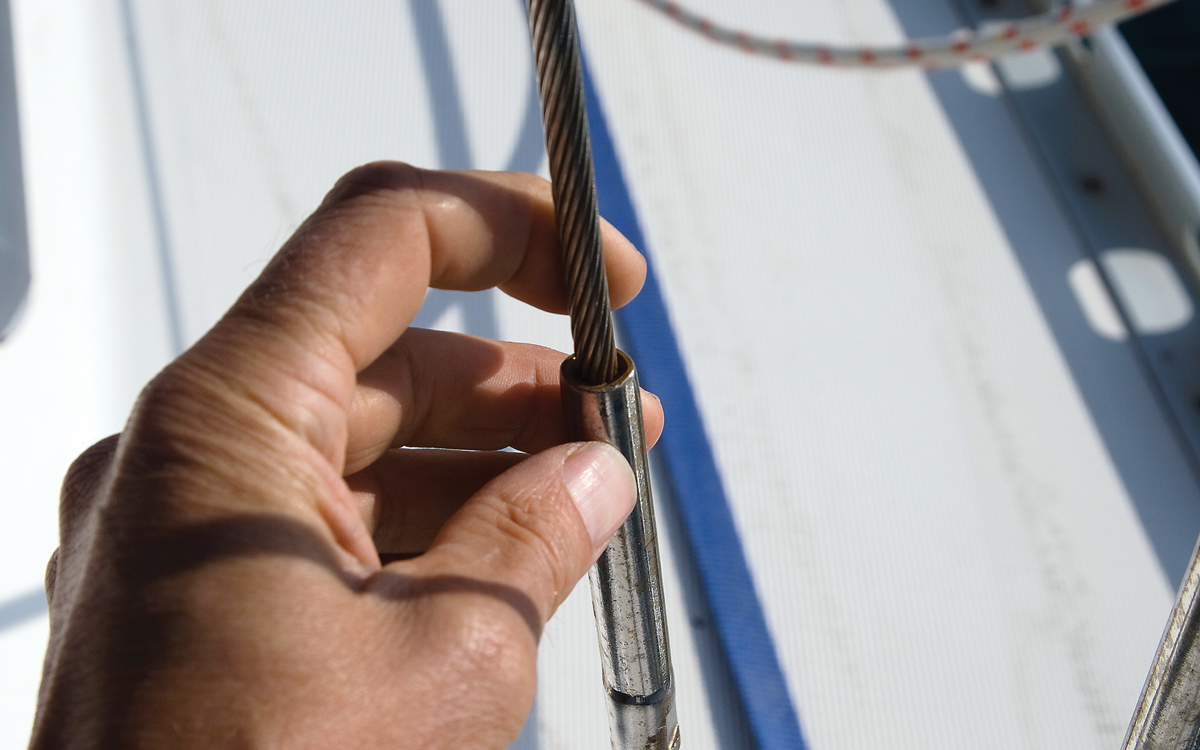
5. Interior & Systems
- Remove all perishables, cushions, and valuables.
- Clean bilges and lockers thoroughly.
- Drain water tanks and plumbing lines (add antifreeze if freezing is possible).
- Leave lockers open for ventilation.
- Install a dehumidifier or moisture absorbers such as DampRid to reduce mould and mildew.

6. Cover and Security
- Install a breathable boat cover or tarp to protect from sun, rain, and debris.
- Ensure good airflow to prevent condensation.
- Lock all hatches and doors.
- Label any disconnected lines or systems for easy reassembly.
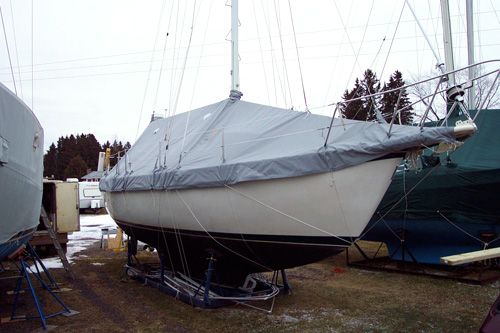
Final Tip
Create a maintenance log of what was done — helps for recommissioning and resale value.
Author
-

Rene is a keelboat instructor and sailing coach in the Mandurah area WA. He is also the author of several books about sailing including "The Book of Maritime Idioms" and "Renaming your boat".
View all posts


